24 October 2024
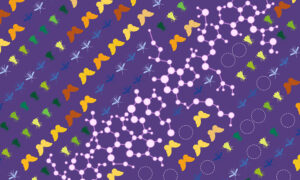
Employing a library of more than 1,000 chemicals, EMBL researchers and collaborators investigated how agrochemicals affect insect populations.
SCIENCE & TECHNOLOGY
11 March 2024

New research from EMBL Heidelberg shows how cells in developing embryos undergo a major shift in the way they regulate gene expression as they mature and differentiate.
SCIENCE & TECHNOLOGY
2024
sciencescience-technology
26 February 2024

Simone Heber talks about studying RNA transport, organising the Bike Club at EMBL, and participating in the Ironman World Championship.
LAB MATTERSPEOPLE & PERSPECTIVES
2024
lab-matterspeople-perspectives
8 February 2023
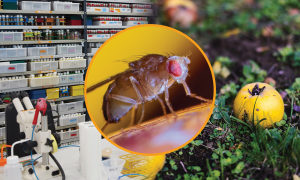
EMBL researchers are stepping outside the lab and thinking outside the box to understand the basic principles that underlie the development and evolution of organismal characteristics.
4 August 2022
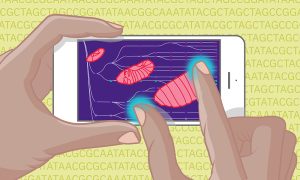
EMBL and UW researchers plus additional collaborators have constructed a complete map of fruit fly embryonic development using machine learning. This research is foundational to better understanding overall embryo development in other species, including humans.
SCIENCE & TECHNOLOGY
2022
sciencescience-technology
25 February 2022
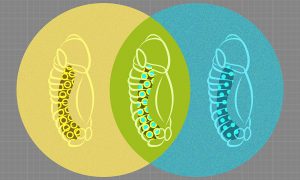
Researchers from the Furlong group at EMBL have come up with a way to observe the development of fruit-fly embryos simultaneously at the genetic and cellular levels, generating a high-resolution and integrated view of how different cell lineages form.
SCIENCE & TECHNOLOGY
2022
sciencescience-technology
12 July 2021
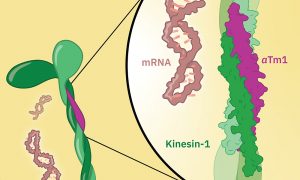
EMBL scientists generate a high-resolution crystal structure of the Kinesin-1/aTm1 transport complex in the fruit fly.
SCIENCE & TECHNOLOGY
2021
sciencescience-technology
2 March 2021
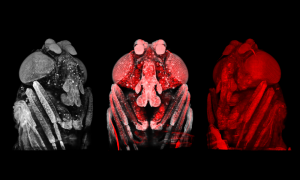
Like caterpillars turning into beautiful butterflies, fruit fly larvae have to go through metamorphosis to finish their development. However, despite the fruit fly Drosophila melanogaster being one of the best studied model organisms in biology, comparatively little attention has been given to this…
SCIENCE & TECHNOLOGY
2021
picture-of-the-weekscience-technology
14 October 2020
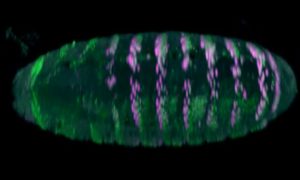
Researchers from EMBL Heidelberg have established an automated pipeline to create mutations in genomic enhancers, letting them watch evolution unfold before their eyes.
SCIENCE & TECHNOLOGY
2020
sciencescience-technology
6 October 2020
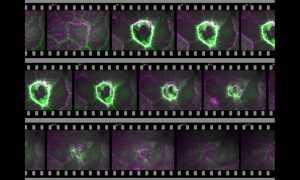
We’ve all had wounds at certain times in our lives. But they heal due to the self-repairing mechanisms in the body.
SCIENCE & TECHNOLOGY
2020
picture-of-the-weekscience-technology
15 September 2020
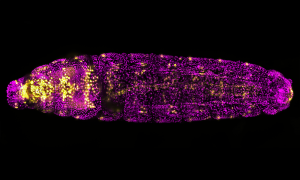
Not just another pretty fruit fly. This magenta and golden drosophila larva is lit up with a fluorescent molecule to help researchers study heart formation.
SCIENCE & TECHNOLOGY
2020
picture-of-the-weekscience-technology
8 September 2020
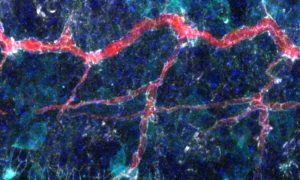
While this may seem like a nebula made up of interstellar clouds of dust and ionised gases, this image isn’t of a galaxy beyond the Milky Way.
SCIENCE & TECHNOLOGY
2020
picture-of-the-weekscience-technology
1 September 2020
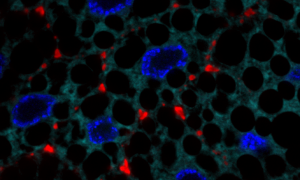
Those heart-shaped cells aren't just for show. They help tell the story of two proteins working together
SCIENCE & TECHNOLOGY
2020
picture-of-the-weekscience-technology
25 August 2020

Beautiful flashes of blue colour help light the way for researchers to study cells in fruit fly larva that provide oxygen to tissues.
SCIENCE & TECHNOLOGY
2020
picture-of-the-weekscience-technology
19 August 2020

Discoveries at EMBL will help researchers to interpret one of the most common types of experiments in genomics and medical studies.
SCIENCE & TECHNOLOGY
2020
sciencescience-technology
6 May 2020
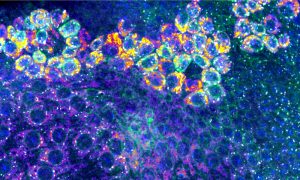
The image shown here, taken by Daniel Rios-Barrera from the Leptin Group shows the cells of the early wing tissue of the fly during larval development.
SCIENCE & TECHNOLOGY
2020
picture-of-the-weekscience-technology
14 April 2020
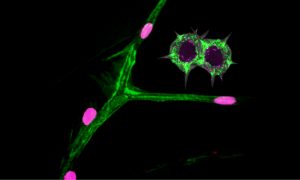
What may look like a branch of a tree with the first flower buds emerging after winter are, in fact, tracheal cells of a fruit fly larva and their nuclei.
SCIENCE & TECHNOLOGY
2020
picture-of-the-weekscience-technology
10 February 2020
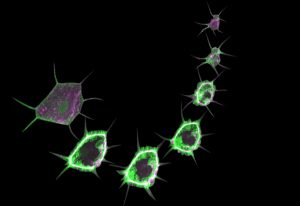
This technique provides a simple but effective way to study the functions of organs in living animals
SCIENCE & TECHNOLOGY
2020
sciencescience-technology
25 September 2019
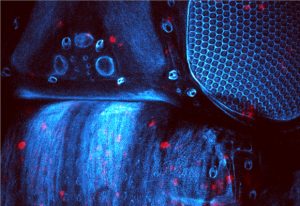
Fruit flies have something that we don’t have: they produce a protein called dumpy. This protein is the largest created by insects, and is comparable in size to the largest human protein – titin. While titin is vital for our muscle function, dumpy connects the soft cells of the insect’s…
SCIENCE & TECHNOLOGY
2019
picture-of-the-weekscience-technology
20 August 2019
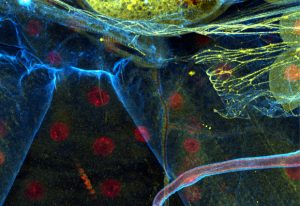
Today’s picture of the week is not only a colourful one, it is also a snapshot of the vast number of shapes that the cells inside an animal body can adopt. How this variety comes about is investigated in the Leptin group at EMBL Heidelberg. To understand the shapes of the cells in fruit fly…
SCIENCE & TECHNOLOGY
2019
picture-of-the-weekscience-technology
1 July 2019
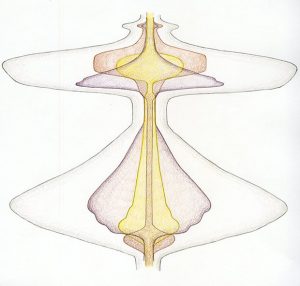
A conversation about art-science collaborations and the importance of drawing in biology.
PEOPLE & PERSPECTIVES
2019
people-perspectivesscience
21 May 2019
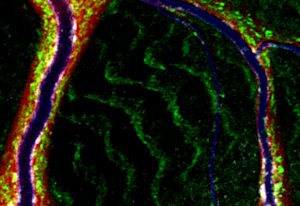
This image – resembling a network of rivers and canals – actually shows the tracheal tip cell of a fruit fly. Fruit flies are heavily used in research and they are a common model organism in developmental biology. Researchers at EMBL use the larvae of fruit flies to study tracheal cell…
SCIENCE & TECHNOLOGY
2019
picture-of-the-weekscience-technology
7 August 2013
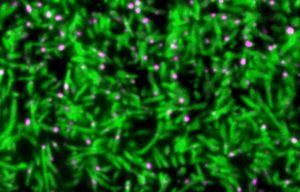
The process cells use to ‘swallow’ up nutrients, hormones and other signals from their environment – called endocytosis – can play a crucial role in shaping the cells themselves, scientists at the European Molecular Biology Laboratory (EMBL) in Heidelberg, Germany, have found. The study,…
SCIENCE & TECHNOLOGY
2013
sciencescience-technology
17 January 2013
This may look like yet another video of a dividing cell, but there’s a catch. You are looking at chromosomes (red) being pulled apart by the mitotic spindle (green), but it’s not a cell, because there’s no cell membrane. Like a child sucking an egg out of its shell, Ivo Telley from the…
SCIENCE & TECHNOLOGY
2013
sciencescience-technology
19 July 2012
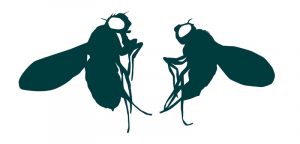
What do you get when you dissect 10 000 fruit-fly larvae? A team of researchers led by the EMBL- European Bioinformatics Institute (EMBL-EBI) in the UK and the Max Planck Institute of Immunobiology and Epigenetics (MPI) in Germany has discovered a way in which cells can adjust the activity of many…
SCIENCE & TECHNOLOGY
2012
sciencescience-technology
3 June 2012
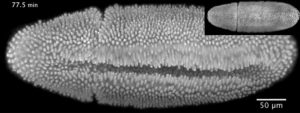
“This video shows a fruit fly embryo from when it was about two-and-a-half hours old until it walked away from the microscope as a larva, 20 hours later,” says Lars Hufnagel, from the European Molecular Biology Laboratory (EMBL) in Heidelberg, Germany. “It shows all the hallmarks of fruit fly…
SCIENCE & TECHNOLOGY
2012
sciencescience-technology
18 March 2012
Like any law-abiding train passenger, a molecule called oskar RNA carries a stamped ticket detailing its destination and form of transport, scientists at the European Molecular Biology Laboratory (EMBL) in Heidelberg, Germany, have found. They show that for this molecule, moving in the…
SCIENCE & TECHNOLOGY
2012
sciencescience-technology
2 February 2012
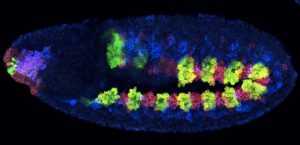
If you wanted to draw your family tree, you could start by searching for people who share your surname. Cells, of course, don’t have surnames, but scientists at the European Molecular Biology Laboratory (EMBL) in Heidelberg, Germany, have found that genetic switches called enhancers, and the…
SCIENCE & TECHNOLOGY
2012
sciencescience-technology
4 July 2010
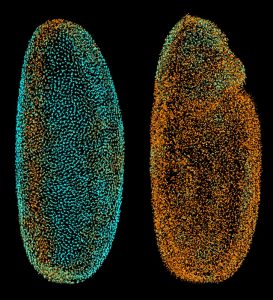
The scientists at the European Molecular Biology Laboratory (EMBL) in Heidelberg, Germany, who ‘fathered’ the Digital Embryo have now given it wings, creating the Fly Digital Embryo. In work published today in Nature Methods, they were able to capture fruit fly development on film, and were the…
SCIENCE & TECHNOLOGY
2010
sciencescience-technology
24 June 2010
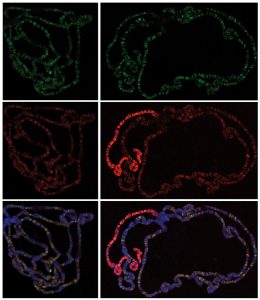
Researchers from the European Molecular Biology Laboratory (EMBL) in Heidelberg, Germany, and the Max-Planck Institute of Immunobiology Freiburg have identified a novel protein complex that regulates around 4000 genes in the fruit fly Drosophila and likely plays an important role in mammals, too.…
SCIENCE & TECHNOLOGY
2010
sciencescience-technology
4 November 2009
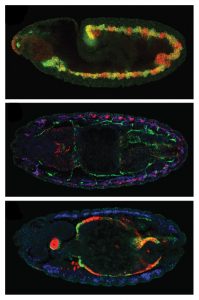
Embryonic development is like a well-organised building project, with the embryo’s DNA serving as the blueprint from which all construction details are derived. Cells carry out different functions according to a developmental plan, by expressing, i.e. turning on, different combinations of genes.…
SCIENCE & TECHNOLOGY
2009
sciencescience-technology
30 May 2008
Researchers from the European Molecular Biology Laboratory (EMBL) in Heidelberg, Germany, and the EMBL-European Bioinformatics Institute (EMBL-EBI) in Hinxton, UK, have revealed new insights into how sex chromosomes are regulated. A chromatin modifying enzyme helps compensate for the fact that…
SCIENCE & TECHNOLOGY
2008
sciencescience-technology
16 May 2007
Over 30% of our genes are under the control of small molecules called microRNAs. They prevent specific genes from being turned into protein and regulate many crucial processes like cell division and development, but how they do so has remained unclear. Now researchers from the European Molecular…
SCIENCE & TECHNOLOGY
2007
sciencescience-technology
No results found




























